
All categories
Featured selections
Trade Assurance
Buyer Central
Help Center
Get the app
Become a supplier

(364 products available)





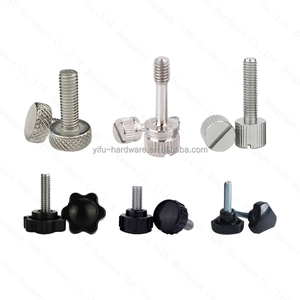










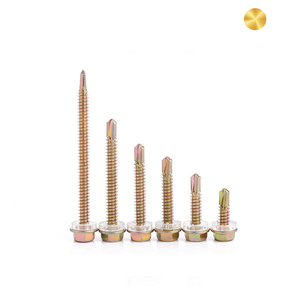
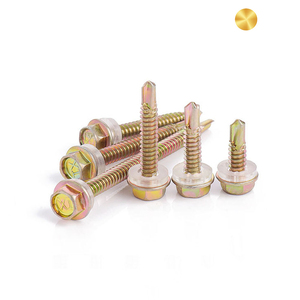


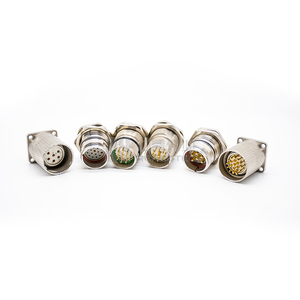

















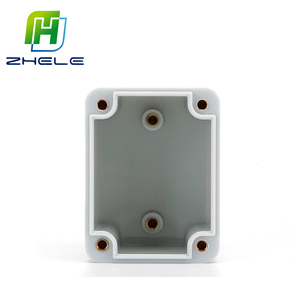

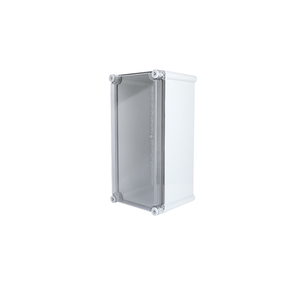




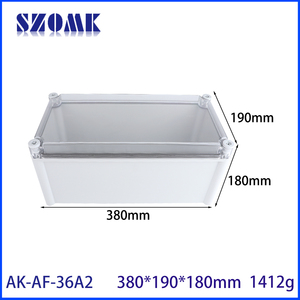
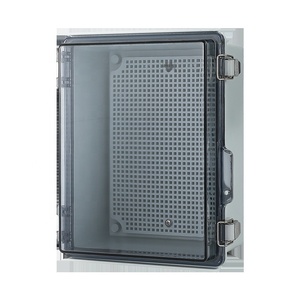





These screws are one of several common fasteners used to secure electrical panel covers. These have specific materials and purposes. Here are the different types of screws for electrical panel covers:
Slotted screws
These are the most basic type of screw and have a single horizontal slot on the head. These offer easy adjustments, though the driver can slip when full torque is applied. These are used in older electrical panels.
Phillips-head screws
These have a cross-shaped slot that allows for better grip with a screwdriver, reducing the chances of the driver slipping. These are used widely as in electrical panels requiring moderate torque. These are paired with a Phillips screwdriver in an electrical cover panel).
Pozi-drive screws
These are similar to Phillips screws but with two additional slots between the cross to allow better grip and reduce cam-out. These are commonly used in heavy-duty electrical applications where panel covers need frequent removal. These are used in electrical panels where greater fastening strength is required.
Hex-head screws
Also known as six-bolts or Allen screws, these have a hexagonal recessed drive. These provide a very secure fit and resist stripping, ideal for high-torque applications. These are used in large electrical panels or industrial cabinets. These require a hex key or Allen wrench to tighten.
Torx screws
These have a star-shaped recess that allows for high torque with less likelihood of stripping. These are often found in critical electrical enclosures where vibration could loosen other types. These are used in electrical equipment that demands strong resistance to loosening.
Thumb screws
These are wing bolts with a manual-grip adjustment that can be turned without tools. These are used for easy access or frequent removal of the panel. These are found in electrical controls that require periodic maintenance.
Understanding the materials and durability of screws is essential for choosing the right fastener in an electrical installation. There are different types of screws with corrosion resistance and strength.
Stainless steel screws
These screws offer superior corrosion resistance, making them ideal for electrical panels in humid or coastal environments. These resist rust and deterioration over time. This ensures a long service life. Reliable as are used in panels that house critical electrical components.
Carbon steel screws with zinc plating
The carbon steel construction provides high tensile strength, while zinc plating offers moderate resistance to corrosion. These are used in less humid environments or indoor applications. These are used in electrical panels where cost-effectiveness is a priority in the cover panel).
Brass screws
Brass screws possess excellent resistance to corrosion, especially in marine environments. It does not rust and resists degradation from exposure to saltwater and acidic conditions. These are commonly used in electrical panels that are exposed to water or high humidity. These offer good electrical conductivity and are also used in settings that require resistance to corrosion over time.
Copper-nickel alloy screws
This alloy is highly resistant to corrosion from saltwater and other harsh environments. These screw materials maintain their strength and electrical conductivity over time. These screws are preferred for marine electrical enclosures and outdoor electrical equipment. These are used where both durability and conductivity are essential for screw maintenance.
Plastic screws
These screws are non-metallic and highly resistant to corrosion, electrical conductivity, and chemical attacks. These are ideal for use in environments where electrical hazards are present or where metal corrosion is a concern. These are found in indoor electrical panel covers, especially in areas prone to chemical exposure.
Titanium screws
Titanium screws are extremely strong, lightweight, and highly resistant to corrosion. These are used in specialized applications such as aerospace electrical panels or high-tech industrial environments. These provide long-lasting durability even in adverse environments. These are more expensive than other screw options.
The screws used on electrical panel covers are essential hardware for a wide range of commercial and industrial environments. There are different types of screws have specific applications.
In construction and building maintenance
These screws are used to secure electrical panel covers during the initial building phase and in ongoing maintenance. These provide the required access to electrical systems for installation and repair. These are found in residential, commercial high-rises, and industrial facility building and maintenance.)
In manufacturing
The screws are used on electrical panel covers for machinery and equipment. These provide access to vital control systems for maintenance and operation. These are used in factories, assembly plants, and production facilities where industrial machinery and equipment are heavily used.
In retail and service industries
These screws are used in commercial settings where electrical control panels power lighting, HVAC, and other systems. These are used in stores, restaurants, offices, and service centers where electrical systems are secured by panel covers. These maintain safe and reliable access to electrical infrastructure.
In logistics and transportation
These screws secure electrical panel covers for vehicle and shipping container electrical systems. These are used in trucks, trains, ships, and aircraft. These cover vital controls for maintaining and operating fleet and transportation services.)
In outdoor and agricultural environments
These are used on electrical panel covers for outdoor and agricultural electrical systems. These are used on irrigation, lighting, and pumping systems on farms as well as agricultural production facilities. These provide access while protecting the electrical components from environmental damage.)
In telecommunications and data centers
These are used on electrical panel covers that power servers, routers, and communication equipment. These provide access to the electrical systems that power networks and telecommunications infrastructures. These are found in internet service provider hubs and telecommunications towers, which help keep networks running smoothly.)
Choosing the right screws for electrical panel covers ensures secure and reliable fastenings. This requires considering factors like screw material, head type, screw length, and thread design. Below are the factors to consider when buying screws for electrical panel covers.
Head type
Different head types include the slotted, Phillips, hex, Pozi-drives, and Torx, offering various degrees of difficulty for removal. The thumb screws are easy to remove without a toolkit. Other head types require specific tools, which are more suited for permanent installations. These are found in electrical panels where the cover needs frequent access or removal for maintenance and repairs.
Corrosion resistance
Long-lasting screws are made from corrosion-resistant materials such as stainless steel, brass, or coated carbon steel. These are ideal for securing electrical panel covers in humid and outdoor environments. Screws offer minimal corrosion resistance. These are suitable for indoor use in climate-controlled environments.
Screw length
These screws have sufficient length to ensure a secure attachment without penetrating too deeply into the panel or underlying structure. Long screws may penetrate excessively and damage internal wiring or electrical components. A screw length corresponds with the thickness of the electrical panel and enclosure cover.
Thread design
Fine-pitch threads are suitable for soft metals, such as those found in an electrical panel. These provide a tighter grip that prevents the metal from stripping. These should have coarse pitch to better engage with difficult materials. These provide a more secure fastening.
Drive style
These screws feature different drive styles, from standard human-made materials to styles requiring specialized tools, like Torx and hex drives. A drive style prevents unauthorized access or tampering, providing extra security. These are used in commercial or industrial electrical systems that must remain inaccessible or secure from external elements.
These are typically used for securing covers, doors, and access panels in electrical enclosures. This helps these offer quick access with ease of removal. On the other hand, as fastening elements have longer shanks ensuring the cover gets attached to a backplane.A combination of these is traditionally used in situations where equipment needs to be very securely installed and well protected.
There are various types of head styles, each serving a specific purpose. The flatheads allow the screws to sit flush against the panel, providing a smooth cover finish. Phillips-head designs offer better torque distribution and less chance of slipping during installation. The hex-head varieties require a wrench for tightening. This provides better resistance to tampering in security-critical environments.
Manufacturers apply coatings such as nickel or chrome plating to improve the corrosion resistance of these screws to ensure reuse. These coatings act as protective barriers against environmental factors, which helps reduce wear over time. Additionally, surface treatments improve cross-section tensile strength and reduce stripping.